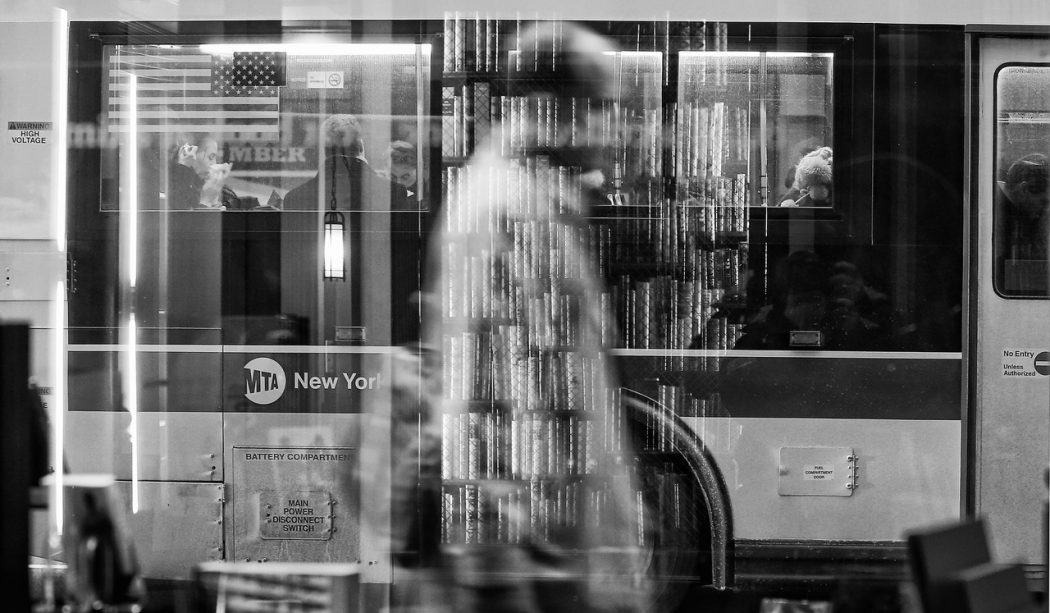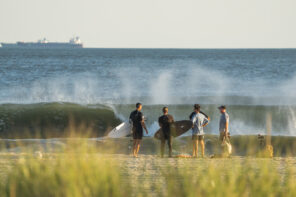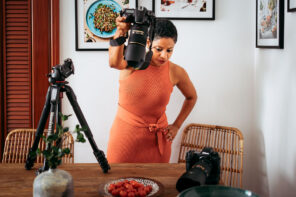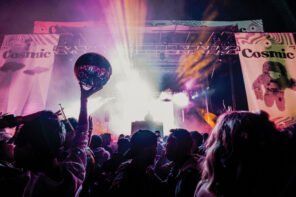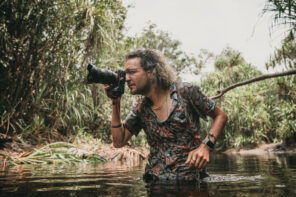How does one measure the phantasms of influence? Back in the early ’70s, I picked up a copy of André Kertész’s book titled “On Reading.” I recall being impressed, and a bit envious, of his black-and-white photographs of people in different cities around the world, caught in the act of reading.
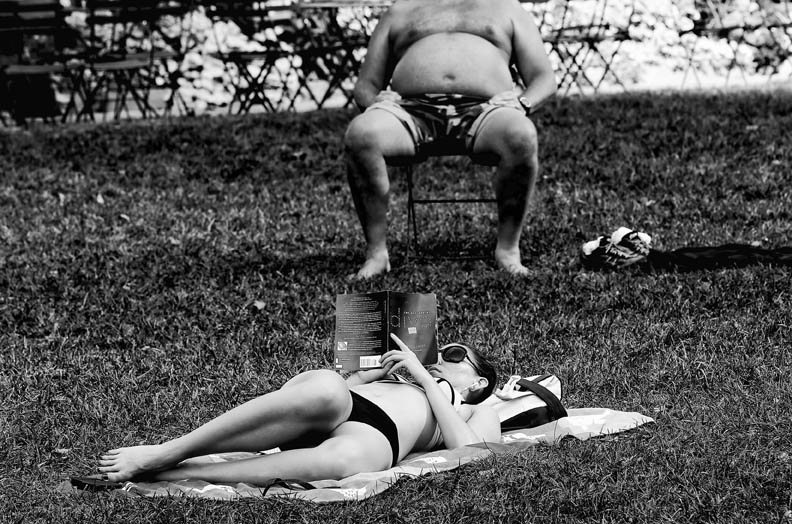
Woman reading The Accidental Diva on the lawn at Bryant Park with shirtless man looking on. Photo by Lawrence Schwartzwald
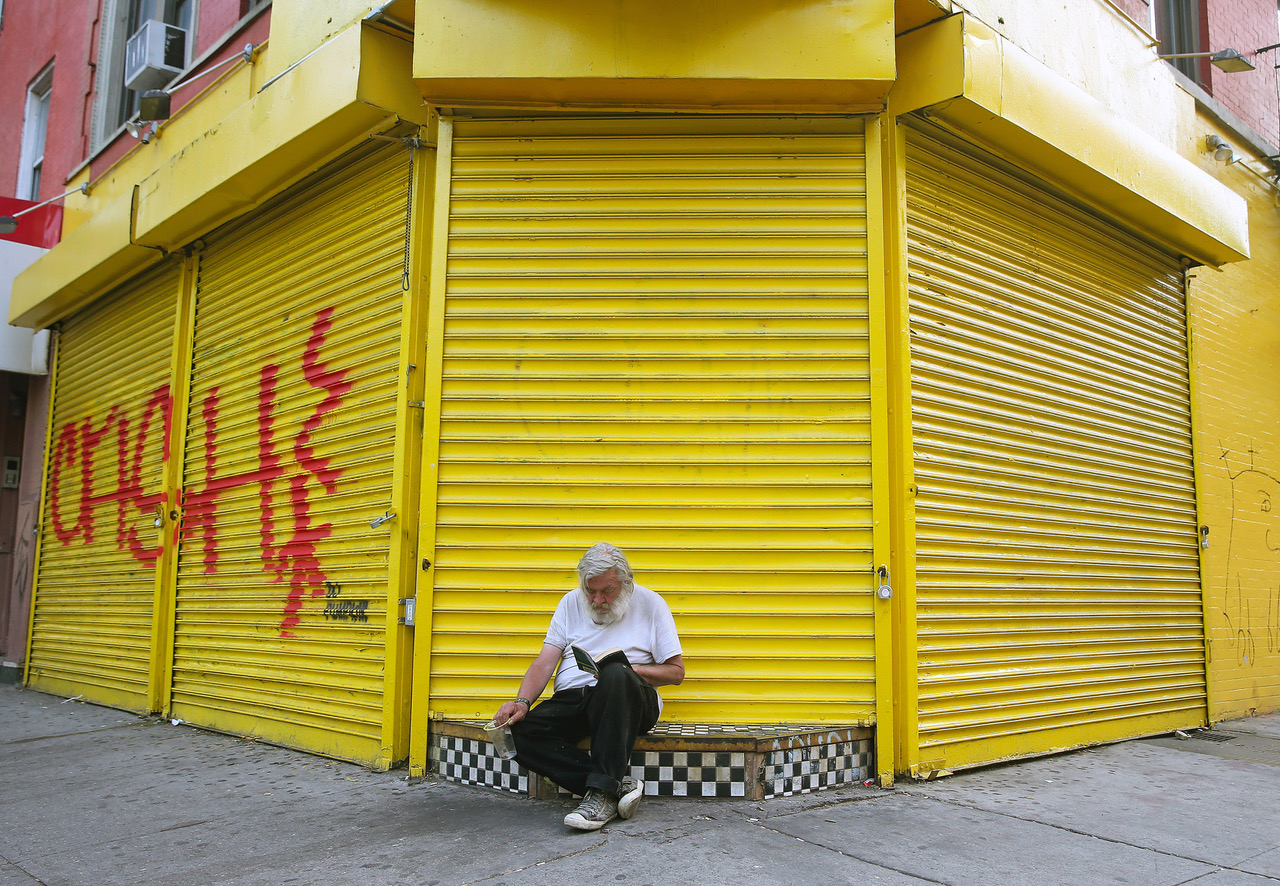
Man with beard reading a book while panhandling beside “CASH” graffiti at 9th Street and Avenue A in the East Village, NYC. June 29, 2014. Photo by Lawrence Schwartzwald
In 1971, I was 18, had just quit my sophomore year at college in New York and was surviving, temporarily, working as a waiter at Stark’s Diner at the corner of 90th Street and Broadway on the Upper West Side. I started my shift each morning, five days a week, at 7 a.m., at about the same time a dozen or so “regulars,” seniors who were mostly stylish elderly women, began sauntering in to claim their favorite tables. They were witty, dignified retirees (many were widowed) and would usually linger, alone or in small groups, for hours—often ordering only a side of toast or an English muffin and cup of coffee (taking advantage of the unlimited free refills).
I turned the unnumbered pages reverently, doting over each of her gutsy images, marveling at a visual artist whose superior intuition seemed to border on the clairvoyant.
One of the “regulars” was an affluent-looking senior with a basket of brown hair and a fixed, melancholy frown who didn’t socialize and spoke in a soft pleasant whisper. “Oatmeal.” Her lips barely moved and she uttered those two syllables as if they were one, each morning, no exceptions, five days a week. I don’t recall her murmuring another word, but I suppose she must have.
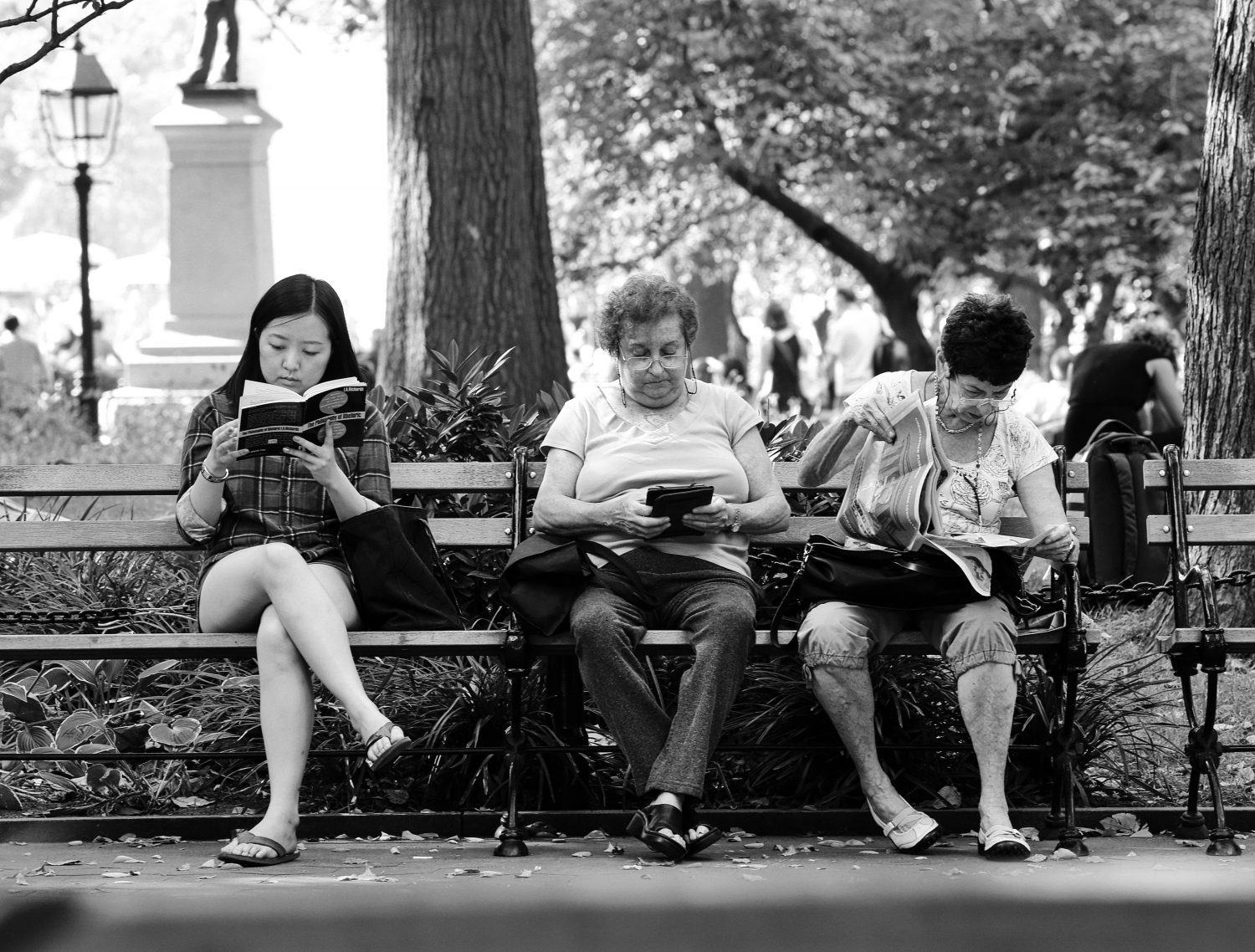
Three women reading on a park bench in Washington square Park, October 4, 2013. Photos by Lawrence Schwartzwald
After a few months, I left the diner and briefly traveled on my own to Europe. When I returned, I hustled from crappy job to crappy job before I enrolled at New York University, eventually moving into an undergraduate dorm steps away from Washington Square Park.
The landmark Strand Bookstore was nearby, and I was there so often, it became a surrogate home. I was a voracious reader then and I loved to walk—to take “grand obsessional walks” (to quote Henry Miller)—across Manhattan. And I was always observing, eavesdropping, stopping at a café or the long counter of a coffee shop now and then to read James Baldwin, Knut Hamsun, Kafka, Jack London, the short stories of Isak Dinesen and Flannery O’Connor.
I was fairly ignorant about photography those days and didn’t own a camera, but in the late ’70s I was eager to see for myself what all the fuss about Diane Arbus was, so I plunked down the $12.50 for a paperback edition of the “Monograph.” I turned the unnumbered pages reverently, doting over each of her gutsy images, marveling at a visual artist whose superior intuition seemed to border on the clairvoyant.
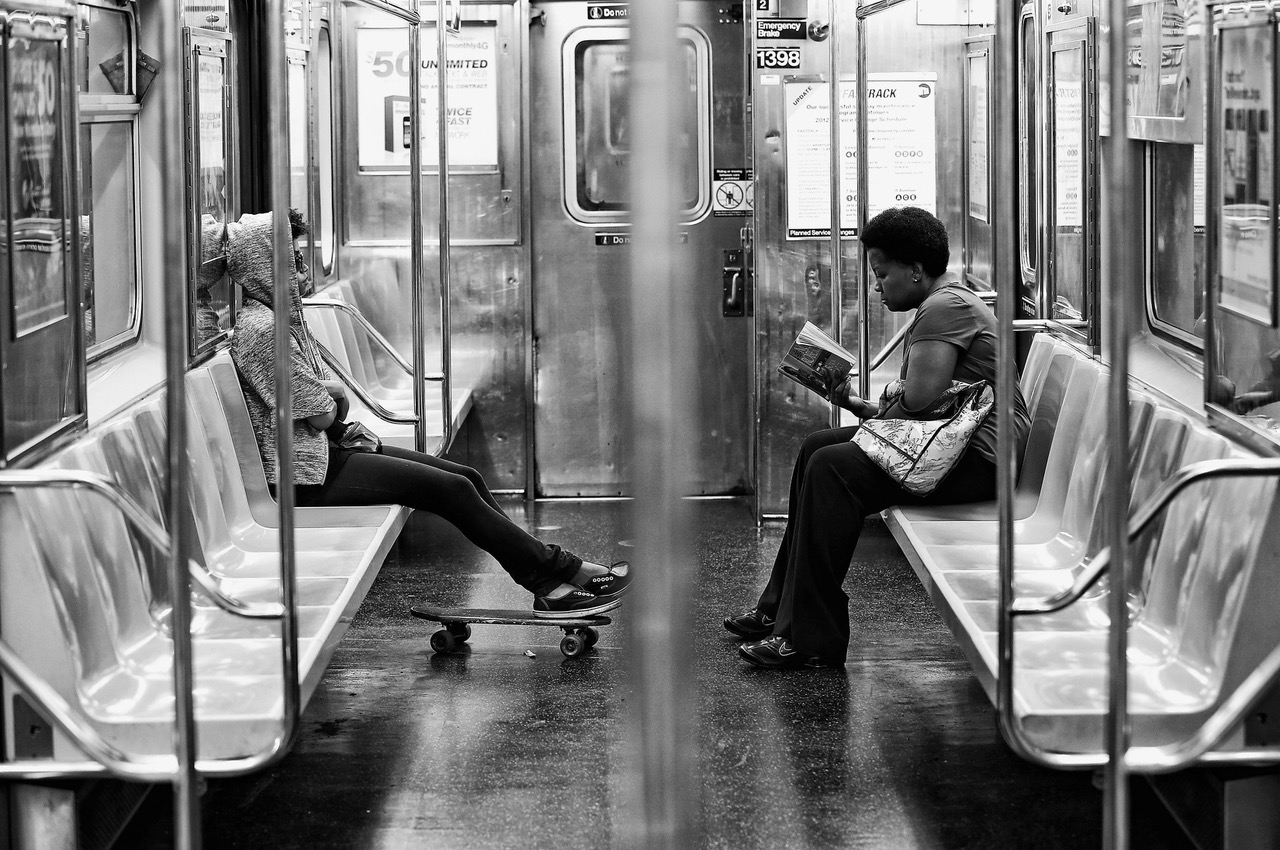
Woman reading a book on the #3 subway train opposite a woman with a skateboard, August 26, 2012. Photos by Lawrence Schwartzwald
But one among the series of 80 portraits (the fifteenth) startled me. I recognized a familiar face—the fragile sullen visage of my erstwhile customer. In Arbus’ square (8 ½ × 8 ½) black-and-white photograph captioned, “An elderly couple on a park bench, N.Y.C., 1969.” I recall staring at the image for a long time, spellbound, trying to fathom its understated message (if any), and feeling oddly confident and inspired by the odd juxtaposition of art and real life.
I had some encouragement and picked up a better camera, and after a few weeks, my first published photo ran on page one of the New York Times.
Much later, in the early ’90s—still reading a lot, mostly short stories and prose poems—I began to photograph (as an amateur) poets and writers at reading events around the city—Allen Ginsberg, Gwendolyn Brooks, Denise Levertov and others. I had some encouragement and picked up a better camera, and after a few weeks, my first published photo ran on page one of the New York Times—a “weather photo” during a heat wave on July 10, 1993.

New York City, NY July 12, 2001 — READING BY MOONLIGHT — A street book vendor at 68th and Columbus gets engrossed in one of his own books for sale today on the Upper West Side today. Photos by Lawrence Schwartzwald
A few weeks later, the New York Post ran a celebrity photo of mine (Marisa Tomei made up to look pregnant on the film set of “The Paper”) and for the next 20 years, I worked as a freelance photojournalist. I continued to read, mostly poets. Now and then I would snap a literary figure or an image of someone (sometimes a celebrity) reading a book, newspaper or other printed matter, and in 2001, my candid image of a book vendor, with a scandalous bit of derrière exposed, reading one of his own books for sale beside a cardboard sign that read “ROMANCE BOOKS 1.00” on Columbus Avenue, made a minor sensation. It ran large in the New York Post, and soon after, a reporter for the New York Observer wrote a hilarious column about the image after interviewing the “portly peddler.”
Since then I have continued to seek out the readers—despite (and sometimes because of) the shuttering of bookshops and the rapid growth of the web and impersonal electronic reading devices—and to discretely photograph my subjects—mostly solitary and often incongruous, desperate or vulnerable—engaged in what seems to be a vanishing art—the Art of Reading.
If you’re interested in picking up Lawrence Schwartzwald’s “The Art of Reading” to see all of these beautiful captured moments in-person, visit one of these online retailers and grab a copy: Strand Books, Art Book or Steidl Books. All photos and text copyright of Lawrence Schwartzwald (Steidl.de).

